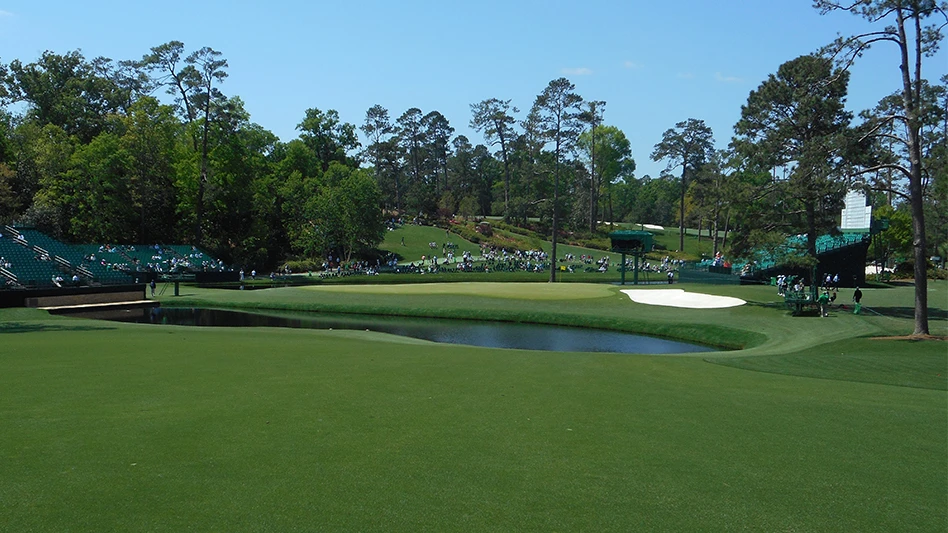“Joe, we’re going to have to do more with less this year.”
How many budget discussions between superintendents and their GMs have started that way in the last 10 years? My guess, most of them. I’d also venture to say, based on our interaction with superintendents and GMs across the country, the ongoing search for greater productivity is here to stay.
If productivity achieved through cuts in agronomic budget, staff and equipment is not high on your GM’s list of priorities, you may stop reading now and move on to something more relevant. But if the idea of more with less is a challenge you’re dealing with, here are three ways to survive and prosper in the new normal.
Update your action plan. Planning is essential to process improvement. If quality and budget requirements have added pressure to your plan for facility care and upkeep, new solutions to longstanding challenges are required. There is method to the madness of doing more with less.
First, redefine the scope of operations for your course. Restate your intentions in a revised agronomic plan. Evaluate the acreage being maintained, modify the fit and finish of peripheral and tertiary acreage and explore new solutions to relieve the upward pressure on labor costs.
Second, increase – yes, increase – the quality standards for the acreage that receives primary focus. Greens, tees and fairways must always be improving or they’re going downhill in the minds of golfers. Emphasize the quality standards and upgrades at every opportunity. Demonstrate to your golfers why playing a better course enhances their enjoyment of the game and the club. Educate your golfers regarding the differences in quality.
Third, photograph areas where qualitative improvements are evident. Those images will come in handy in the next budget cycle.
Win the budgeting game. Many facility managers think they need to be at the top of their games during the budgeting cycle. Top managers also know the budgeting isn’t really a cycle – it’s an ongoing process that begins with information gathering, adds documentation and builds to a well-planned presentation.
The advance preparation requires that you can inform and educate those who are involved in reviewing and approving your budget. Teach them why the improvements in quality are needed to index and defend pricing decisions. Share photos that show how improvements enhanced the course and its reputation. Cite examples of where improved course conditions have enable courses to increase fees.
Provide financial analyses of labor hours for the various tasks based on the cost per acre for superior conditions or per-square-foot for greens and tees. Provide supporting data from GCSAA and other benchmarking sources. Non-experts need data to help them understand the measurements of quality. Connect quality standards directly to costs to ensure that all involved understand that quality standards are worth upholding and defending.
Win the support of those in decision-making roles long before the budgeting presentation and review period so they understand the quality argument.
Ask for more. Golf course capital needs are endless. Look ahead of the current-year budget and inform all involved what the following budget year will require. AICPA (www.aicpa.org) publishes the depreciation schedule for golf course equipment. GCBAA (www.gcbaa.org) and ASGCA (www.asgca.org) provide life-cycle guidance for golf course features like greens, tees and bunkers. Your future budgets are filled with additional needs, so plant the seeds for the future.
While you’re asking for more, you can also ask more of yourself and your crew. Most superintendents dedicate countless hours to their jobs; there’s not a more conscientious group of professionals in this business. Most are also dedicated to ongoing education – improved methods, fresh ideas and best practices that improve quality and efficiency.
Think you can’t do more? Ample research has shown that we’re all capable of more if we believe it’s possible and if we prioritize our efforts. Start small in a key area such as labor, which represents 52 to 55 percent of most golf course budgets, according to data from Global Golf Advisors. Two percent improvement in efficiency translates to a $10,000 savings in a $500,000 budget.

Explore the March 2018 Issue
Check out more from this issue and find your next story to read.
Latest from Golf Course Industry
- Smart Greens Episode 1: Welcome to the digital agronomy era
- PBI-Gordon promotes Jeff Marvin
- USGA investing $1 million into Western Pennsylvania public golf
- KemperSports taps new strategy EVP
- Audubon International marks Earth Day in growth mode
- Editor’s notebook: Do your part
- Greens with Envy 66: A Southern spring road trip
- GCSAA’s Rounds 4 Research auction begins





